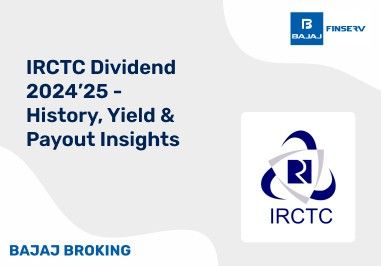BAJAJ BROKING
Tankup Engineers IPO is Open!
Open a Free Demat Account
Trade Now, Pay Later with up to 4x
Track Market Movers Instantly
What is Value Investing?
Looking to begin investing in the stock market? One popular approach many people take is to select companies that show major potential for growth. Often, these are smaller upcoming companies. Putting your money into these stocks might just see your investment grow significantly if that company’s stock price skyrockets.
But let’s say you’re thinking long-term and aiming to perhaps build a nest egg for a big future goal. Then, the value investing strategy might be just what you need. Wondering what value investing is? In this article, we’ll break down the definition of value investing and dive into how it works.
What is Value Investing?
The meaning of value investing is quite straightforward. The strategy centres on pinpointing and investing in stocks from companies that are currently undervalued. An undervalued stock is priced lower than its actual worth or intrinsic value. The goal is to buy these stocks at a low price, hold onto them for a few years, and then potentially profit when their price eventually rises to reflect their true value.
In essence, these stocks belong to companies overlooked by the market. As time passes and the broader investor community recognizes the true value of these firms, the demand for their stocks rises. Consequently, the price of such stocks is expected to climb, aligning more closely with their intrinsic values.
Key Metrics Used to Identify the Intrinsic Value
To follow a successful value investing strategy, it is crucial to identify the intrinsic value of a stock. Only then can you compare the value with the stock’s market price and make a judgement about whether or not the stock is undervalued. The following metrics can help identify the intrinsic value of a company’s shares.
- Price-to-Earnings Ratio (P/E Ratio)
This ratio is a comparison of the prevailing market price of a company’s shares and the earnings per share (EPS). A high P/E ratio may indicate that the stock is potentially overvalued, while a low P/E ratio may be a sign that the stock is undervalued. So, stocks with low P/E ratios may be suitable choices for your portfolio if you are following the value investing strategy.
- Price-to-Book Ratio (P/B Ratio)
The P/B ratio is a comparison of the book value of a company’s shares and the market price per share. A higher P/B ratio indicates that the company is overvalued, but a lower P/B ratio — especially if it is below 1 — could indicate that the company is undervalued. It is these stocks that you need to focus on if you want to adopt the value investing strategy.
- Discounted Cash Flow
The discounted cash flow is the present value of future cash flows that a company can generate from its operations. These future cash flows are discounted at an appropriate and realistic interest rate. By computing the present value of future cash flows, you can arrive at the intrinsic value of a company’s shares and compare it with the prevailing market price.
- Earnings Before Interest and Taxes (EBIT)
This metric helps you identify the cash flow of a company before the effect of interest and taxes. It is a useful factor to track before it helps you assess how a company may perform in the future. In other words, even if the company may be making losses initially, it could turn profitable if its organisational, financial and operational framework is intact.
- Earnings Before Interest, Taxes, Depreciation and Amortisation (EBITDA)
The EBITDA is also often used in combination with the EBIT to perform a more thorough fundamental analysis of a company and arrive at its intrinsic value.
Conclusion
In addition to the above quantitative factors, there are some qualitative aspects as well that you need to analyse to determine if a stock is undervalued. They include the company’s credit rating, its performance during a recessionary phase in the market and its credibility among its customers. These factors can give you some insights into whether or not the company’s value may appreciate or depreciate over time.
Ultimately, value investing is a strategy that can be extremely beneficial if you know when to use it and how to use it well. To get better at value investing, it is essential to learn the finer details of fundamental analysis, which focuses on the valuation of stocks.
Share this article:
Read More Blogs
Disclaimer :
The information on this website is provided on "AS IS" basis. Bajaj Broking (BFSL) does not warrant the accuracy of the information given herein, either expressly or impliedly, for any particular purpose and expressly disclaims any warranties of merchantability or suitability for any particular purpose. While BFSL strives to ensure accuracy, it does not guarantee the completeness, reliability, or timeliness of the information. Users are advised to independently verify details and stay updated with any changes.
The information provided on this website is for general informational purposes only and is subject to change without prior notice. BFSL shall not be responsible for any consequences arising from reliance on the information provided herein and shall not be held responsible for all or any actions that may subsequently result in any loss, damage and or liability. Interest rates, fees, and charges etc., are revised from time to time, for the latest details please refer to our Pricing page.
Neither the information, nor any opinion contained in this website constitutes a solicitation or offer by BFSL or its affiliates to buy or sell any securities, futures, options or other financial instruments or provide any investment advice or service.
BFSL is acting as distributor for non-broking products/ services such as IPO, Mutual Fund, Insurance, PMS, and NPS. These are not Exchange Traded Products. For more details on risk factors, terms and conditions please read the sales brochure carefully before investing.
Investments in the securities market are subject to market risk, read all related documents carefully before investing. This content is for educational purposes only. Securities quoted are exemplary and not recommendatory.
For more disclaimer, check here : https://www.bajajbroking.in/disclaimer
Our Secure Trading Platforms
Level up your stock market experience: Download the Bajaj Broking App for effortless investing and trading













